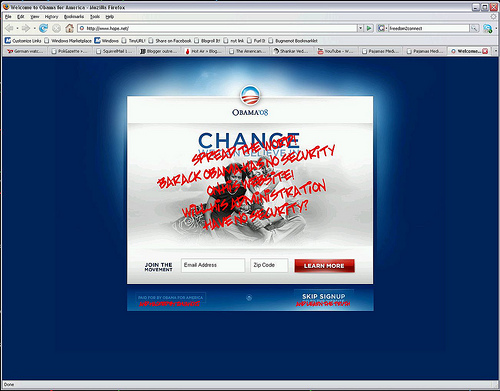Since most of the world is living and doing business online, vandals have been forced to evolve within the digital revolution. Instead of defacing physical property, hackers are now capable of defacing businesses and other organizations' websites. By educating yourself on what is website defacement and what measures can be taken to prevent it, you could save your operation a great deal of embarrassment and stress.
What is website defacement?
The term "website defacement" refers to any unauthorized changes made to the appearance of either a single webpage or an entire site. In some cases, a website is completely taken down and replaced by something new. In other instances, a hacker may inject code to add images, popups, or text to a page that was not previously present. Still, other forms of defaced websites may include the insertion of malicious code to infect the computers of visitors, thus making them vulnerable to viral attacks and other problems. In this way, website defacement is not only capable of embarrassing an attacked business or organization on a visual level, but it can also cause harm to its followers. Because of this, these practices are illegal and can lead to fines and/or jail time when the perpetrator is caught.
Why do hackers vandalize websites?
Hackers may choose to deface a website for many reasons. In many instances, website defacement is done purely for fun. In these cases, hackers may find pleasure in penetrating a server and attempting to hack all of the sites hosted there or may focus on a particular website that they want to "conquer." This hacking type is usually done to mock site owners and/or security personnel for the weaknesses within their server(s) and to leave their mark on the website. It is for this reason that some people refer to website defacement as website graffiti.
In other cases, hackers may deface a website as a means to protest a message (i.e., a political campaign) or to promote a cause of their own. These so-called "hacktivists" may take down the pages of those with conflicting beliefs or messages or may replace their content as a means to "expose" these opponents or make it seem as though the victim of the web defacement actually supports the hacker's cause. These "hacktivist" organizations believe that they are performing acts of civil disobedience and exercising their right to free speech rather than vandalizing private property.
Still, other hackers may engage in website defacement out of pure malice. As an example, a hacker may choose to break into a website's code and leave a message that indicates that the business affiliated with the page has closed its doors as a means to drive customers away. The longer such message stays up, the more people will see it and believe that this false information is true, thus, harming business.
How can I prevent website defacement?
As the number of websites that hackers deface is on the rise, organizations and operations of all kinds need to be prepared to prevent and fight against virtual vandalism. The first step to preventing website defacement is to ensure that all of your security measures are enabled and up-to-date for both your website and its server. It is also smart to continuously back up your website data. Some hackers perform MySQL injection attacks, which utilize a popular database system to access sensitive website information. To remove the defacement, the site owner must find the corrupted code and replace it with new code, which can be extremely time-consuming and difficult. In some cases, a website must be totally wiped and replaced with a fresh version. Having a recent backup of your website will ensure that your website goes back online much faster.
Of course, it's always a good idea to have someone looking out for your website and monitoring it regularly. There's nothing more embarrassing than finding out that your website has been defaced days after the fact. By this point, countless visitors have seen the defacement, and you've been in the dark. Although you may not have the time to check your website for infiltration signs frequently, it's wise to enlist the help of service with the means to monitor your page(s) at regular intervals for defacement or other trouble spots. This will allow any corrections to be made promptly so that your organization will not be impacted by potential website defacement.
Don't let yourself become a victim. Regularly monitoring your website protects you from any unfriendly interference. If you do not have an account with us yet, sign up for a 30-day free trial to test all our services absolutely free for one month.



 Copyright 2000-2024, WebSitePulse. All rights reserved.
Copyright 2000-2024, WebSitePulse. All rights reserved.